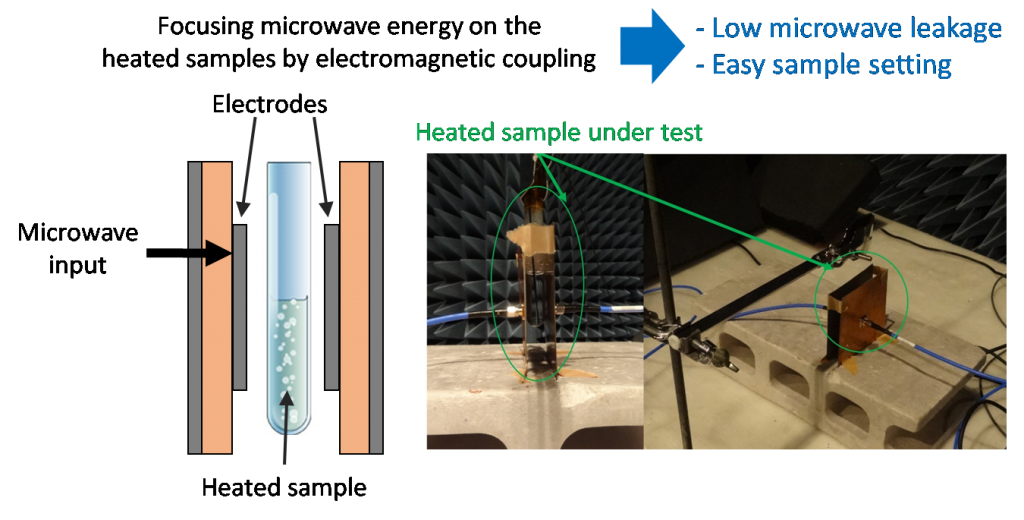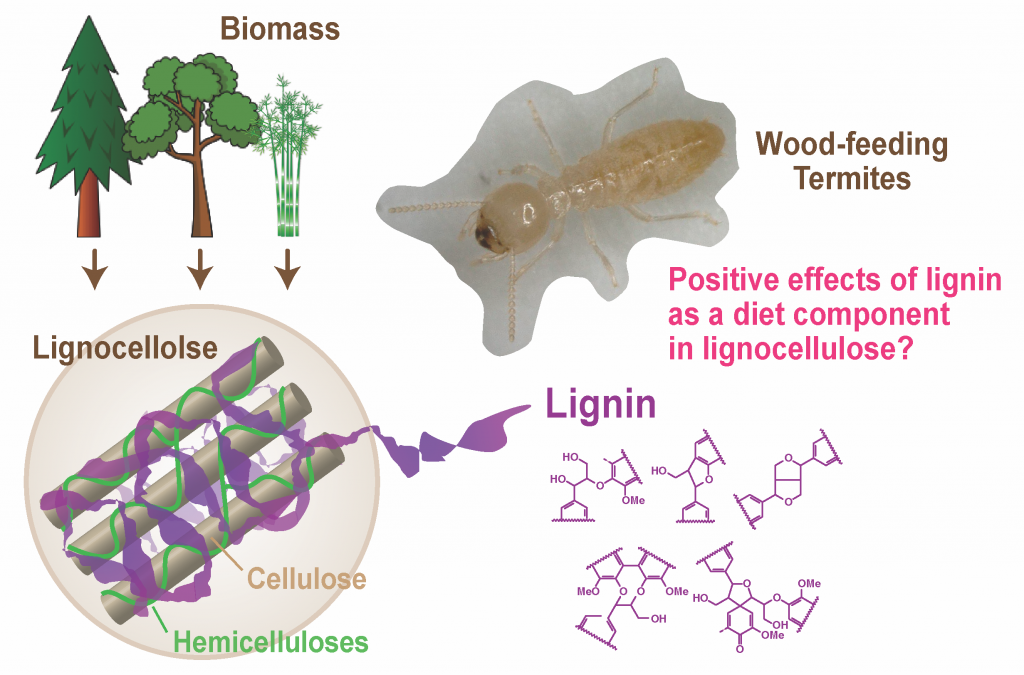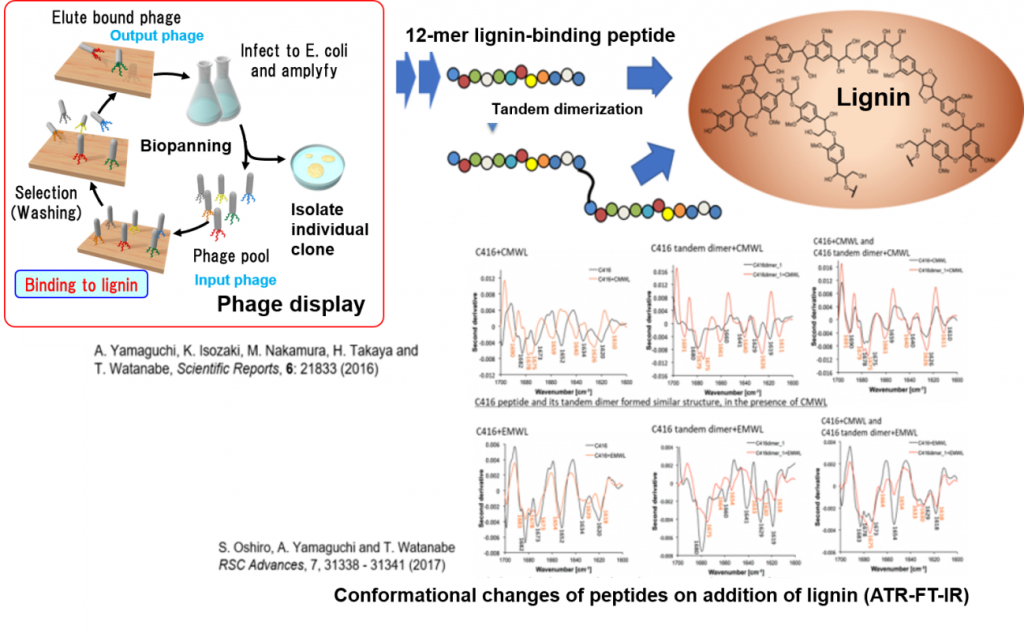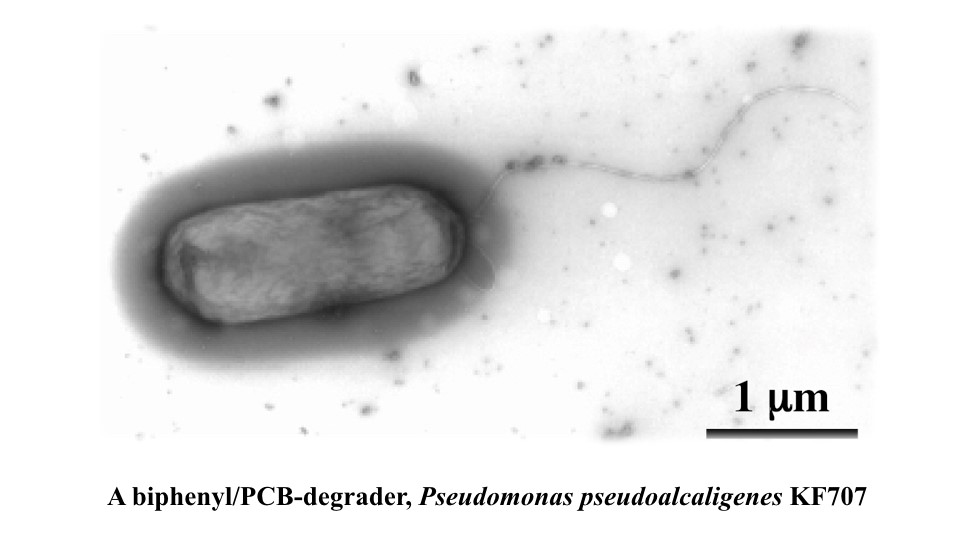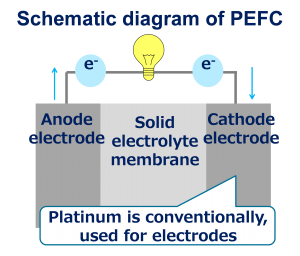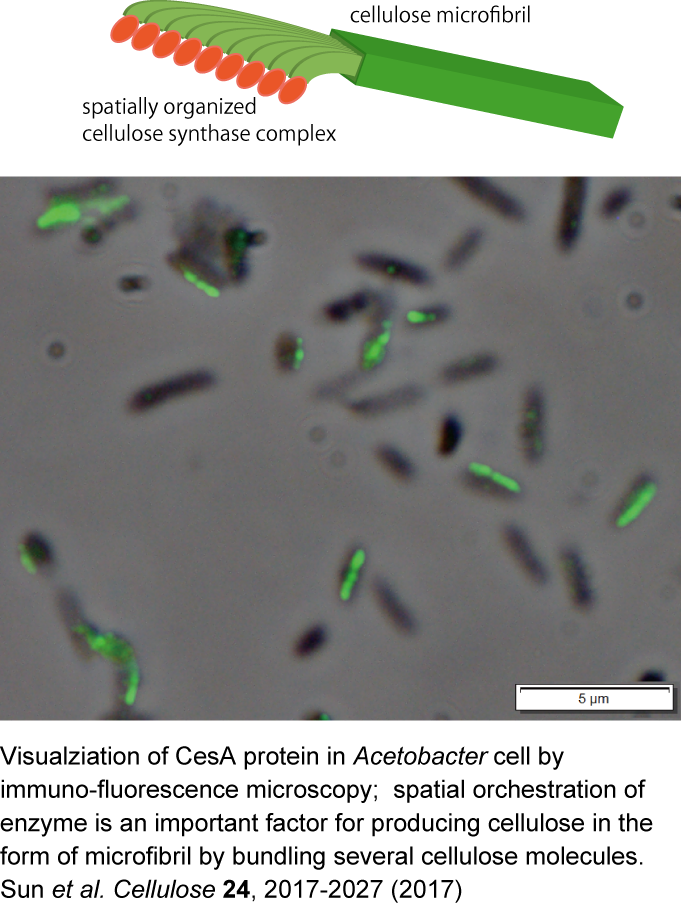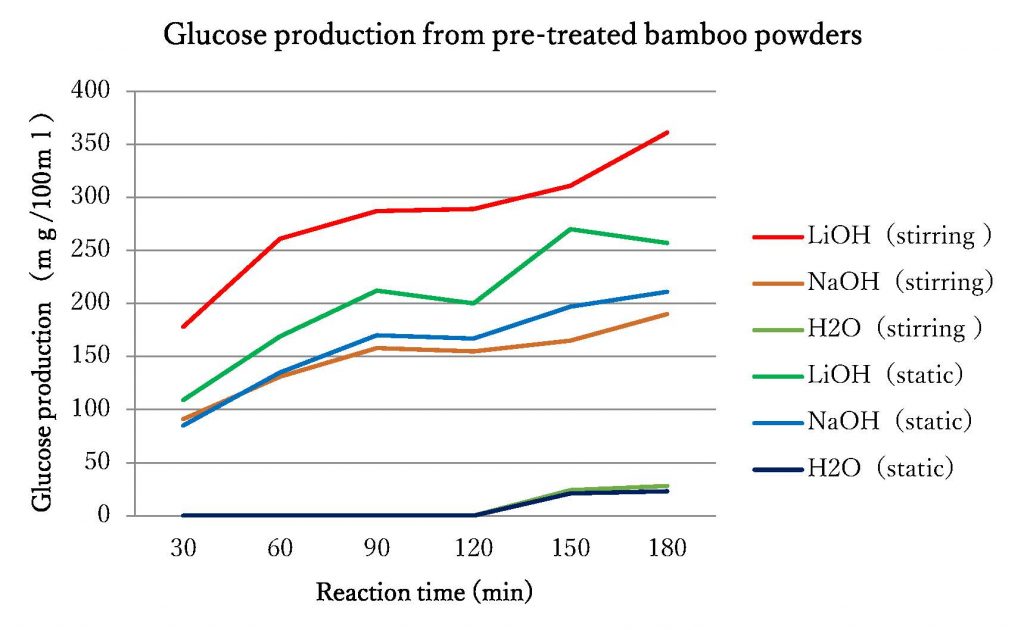2017 Activity Report for Mission 2: Advanced Development of Science and Technology towards a Solar Energy Society
Updated: 2018/06/08
Plenary meetings
Five meetings were done for discussing the following points:
・Sharing the achievements that has been made
・How to develop the Mission 2 activity in the following years
・Delivering the budget to several specific researches:
1. Synthesis of Cathode Catalyst for Fuel Cells from Nitrogen Doped Carbonized Cellulose
2. Development of Microwave Heating Applicator for Chemical Processing
3. Development of the simple pre-treatment to enhance cellulose hydrolysis for biomass utilization
4.Towad Synthetic Biology of Cell Wall Biosynthesis with Lipid-Modified Escherichia coli
Mission 2 –related studies (The presented posters at the Mission 2 Symposium)
20 presentations were made at the Mision2 symposium on November 27, 2017 as shown below.
1) Direct observation of molecular assembly process in cellulose biosynthesis
2) Production of antiviral compounds from sugarcane bagasse by microwave reactions
3) Studies on lytic polysaccharide monooxygenase (LPMO) from the selective white rot fungus, Ceriporiposis subvermispora
4) Analysis of interaction between carbohydrate binding module and lignin using NMR
5) Cloning and expression of the dye-decolorizing peroxidase genes from a biphenyl/PCB-degrader, Rhodococcus wratislaviensis T301
6) Simplification of pre-treatments on cellulose extraction from lignocelluloses
7) Ethanol production by recombinant yeast expressing laccase containing lignin-binding peptide
8) Screening of the biosynthetic genes of lipid-related metabolites from a selective lignin-degrading fungus, Ceriporiopsis subvermispora
9) Analysis of specific surface area and pore size distribution of functional carbonized biomass
10) Enhancement of lignin degradation by recombinant laccase bearing lignin-binding peptide
11) Chemical structure and molecular assembly of lignocellulose produced in lignin-modified rice mutants
12) Alterations of lignin chemical structures in the mammalian digestive system
13) Analyses of wood lignin before and after the reaction of β-O-4-cleaving enzymes
14) Study on a Compact Rectifier for Wireless Power Transfer with a Multilayer Substrate Filter
15) Investigation of high efficient beam according distance and receiving antenna size for MPT
16) Study on Microwave Power Transfer by Harmonics-Based Retrodirective System
17) Experimental Study on a Rectifier with Intermittent Input Signal
18) Development of Microwave Heating Devices Using Electromagnetic Coupling
19) Study on Power Transmission Antenna for Multicopter Assisted Wireless Power Transmission to Observation Equipment for Volcanoes
20) Study on a magnetron for wireless power transfer and communication system.
<Outstanding achievement in 2017 (1)>
Development of Microwave Heating Applicator for Chemical Processing
Tomohiko Mitani, Daichi Nishio, Naoki Shinohara (RISH)
A new type of microwave heating applicator for chemical processing was designed via 3D electromagnetic simulations, and prototypes were experimentally fabricated and evaluated. Electromagnetic coupling technique, which has been studied as a way of wireless power transfer, was applied to the applicator design. Two patents on the developed applicator were applied. As a future work, microwave heating efficiency should be enhanced and microwave leakage outside the applicator should be reduced without metallic shielding.
Publications/Patents
Two patent applications (in Japanese) were made.
<Outstanding achievement in 2017 (2)>
Lignin decomposition and utilization by termites
Didi Tarmadi1, Yuki Tobimatsu1, Masaru Kobayashi2, Toshiaki Umezawa1, Tsuyoshi Yoshimura1(1 RISH – Kyoto University, 2 Graduate School of Agriculture – Kyoto University)
Studies on lignin decomposition and utilization by termites can contribute to the development of sustainable technology to convert lignocellulosic biomass to valuable fuels and materials. This study therefore aimed to investigate lignin decomposition and utilization by an economically important pest termite, Coptotermes formosanus Shiraki. Milled-Wood-Lignins(MWLs) prepared from Japanese cedar (Cryptomeria japonica) (softwood), Japanese beech (Fagus crenata) (hardwood), and rice traw (Oryza sativa L. ssp. japonica cv. Nipponbare) (grass) were fed on C. formosanus workers, and decomposition of lignins were evaluated by using high-resolution multidimensional nuclear magnetic resonance (NMR) techniques. The study also investigated the effects of MWLs on the gut microbial community profiles by using automated ribosomal intergenic spacer analysis (ARISA). The results supported the view that lignin polymers are at least partially decomposed during their passage through the termite gut digestive system. It was also found that lignins give marked positive effects on the survival of C. formosanus workers as well as on their maintenance of hindgut protists when served with polysaccharide diets. Furthermore, it was suggested that the gut bacterial community profiles are also affected by dietary lignins. This study has provided evidence that the presence of lignin is crucial to maintaining the physiological activities and a wholesome hindgut digestive system of C. formosanus workers for their efficient lignocellulose decomposition.
Publications/Patents
- Didi Tarmadi, Tsuyoshi Yoshimura, Yuki Tobimatsu, Masaomi Yamamura, Takuji Miyamoto, Yasuyuki Miyagawa and Toshiaki Umezawa: The effects of various lignocelluloses and lignins on physiological responsesof a lower termite, Coptotermes formosanus, Wood Sci., DOI 10.1007/s10086-017-1638-z.
- Didi Tarmadi, Tsuyoshi Yoshimura, Yuki Tobimatsu, Masaomi Yamamura and Toshiaki Umezawa: Effects of lignins as diet components on the physiological activities of a lower termite, Coptotermes formosanus Shiraki, Insect Physiol., 103, 57-63 (2017).
- Didi Tarmadi, Yuki Tobimatsu and Tsuyoshi Yoshimura: Hydrogen and methane emissions by the lower termite Coptotermes formosanus Shiraki on various lignocellulose and lignin diets, J. Environ. Entomol. Zool., 28(4), 173-180 (2017).
- Didi Tarmadi, Yuki Tobimatsu, Masaomi Yamamura, Takuji Miyamoto, Yasuyuki Miyagawa, Toshiaki Umezawa and Tsuyoshi Yoshimura: NMR studies on lignocellulose deconstructions in the digestive system of the lower termite Coptotermes formosanus Shiraki, Rep., (2018) 8:1290, DOI:10.1038/s41598-018-19562-0.
Research 1: Development of bio- and synthetic catalysts for biorefinery (Takashi Watanabe)
[Topic of 2017: Conformational changes of peptides possessing characteristic sequences binding to wood-derived lignin.]
We found the peptides possessing characteristic sequences binding to lignin, and published the results in Scientific Reports and press-released in 2016.
In 2017, we found that the tandem dimer of the 12-mer peptide possessed around 10 times higher affinity to lignin than that of the original peptide. We also found that conformation of the peptide changes on addition to lignin from softwood and hardwood. The conformational changes of the peptide depended on the structure of the lignin. In 2017 the binding behaviour of the 12-mer peptide and its tandem dimer and their conformational changes were published in RSC Advances.
Publications/Patents
- Satoshi Oshiro, Asako Yamaguchi and Takashi Watanabe, RSC Advances, 7, 31338 – 31341 (2017).
- Three presentations in domestic scientific meetings
Research 2: Use of Biphenyl/Polychlorinated Biphenyl-Degrading Bacteria for the Production of Useful Aromatic Compounds (Takahito Watanabe)
We focus on the production of useful aromatic compounds from wood biomass, such as lignin-derived aromatic compounds, by molecular breeding of aromatic compound-catabolic genes from biphenyl/PCB-degrading bacteria. We are now trying to screen and identify useful genes and proteins from these bacteria using genomics and proteomics technologies.
Publications/Patents
- Watanabe, T., Yoshioka, K., Kido, A., Lee, J., Akiyoshi, H., and Watanabe, T. Preparation of intracellular proteins from a white-rot fungus surrounded by polysaccharide sheath and optimization of their two-dimensional electrophoresis for proteomic studies. Microbiol. Methods 142, 63-70 (2017). doi: 10.1016/j.mimet.2017.09.009.
- Suenaga, H., Fujihara H., Kimura, N., Hirose, J., Watanabe, T., Futagami, T., Goto, M., Shimoda, J., and Furukawa K. Insights into the genomic plasticity of Pseudomonas putida KF715, a strain with unique biphenyl-utilizing activity and genome instability properties. Microbiol. Rep. 9, 589-598 (2017). doi: 10.1111/1758-2229.12561.
- Three presentations in domestic scientific meetings
Research 3: Synthesis of Cathode Catalyst for Fuel Cells from Nitrogen Doped Carbonized Cellulose (Toshimitsu Hata)
Nitrogen-doped carbon prepared from cellulose acetoacetate adsorbing Fe, and Co, and melamine was prepared by pulse current heating to produce a cathode catalyst for a solid polymer type fuel cell. Graphitic nitrogen and pyridine type nitrogen of nitrogen doped carbon play an important role in the oxygen reduction activity.
Publications/Patents
Hata, T., Asakura R., Uchimoto, Y., Bonnamy, S., Benoit, R., Bronsveld, P., Honma S., Synthesis and characterization of nitrogen-doped carbons from cellulose with applications to the oxygen reduction reaction, Journal of Chemical Technology & Biotechnology (in submitting).
Research 4: Fundamentals of Lignin Chemistry and the Green Conversions(Takashi Watanane, Hiroshi Nishimura)
To achieve the environmentally-friendly lignin decomposition and conversion system, we work on the structural chemistry of lignocellulose, the bio-based conversion of lignin, and decomposition system of microorganisms in nature.
We organized a session of Asia Research Node International Conference entitled “Wood Biomass Conversion – Green Chemistry and Biological Processes ” by five distinguished invited speakers on July 19, 2017.
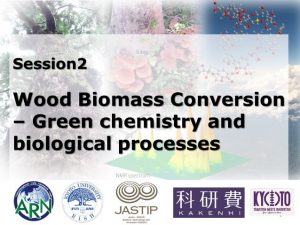 |
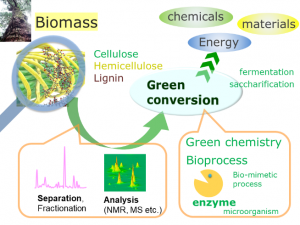 |
Publications/Patents
- Nishimura, H., Yamaguchi, D., Watanabe, T., Cerebrosides, extracellular glycolipids secreted by the selective lignin-degrading fungus Ceriporiopsis subvermispora, Chem Phys Lipids, 203, 1-11, 2017.
- Suzuki, D., Nishimura, H., Yoshioka, K., Kaida, R., Hayashi, T., Takabe, K., Watanabe, T., Structural characterization of highly branched glucan sheath from Ceriporiopsis subvermispora, Int J Biol Macromol, 95, 1210-1215, 2017.
- Nakazawa T, Izuno A, Horii M, Kodera R, Nishimura H, Hirayama Y, Tsunematsu Y, Miyazaki Y, Awano T, Muraguchi H, Watanabe K, Sakamoto M, Takabe K, Watanabe T, Isagi Y, Honda Y, Effects of pex1 disruption on wood lignin biodegradation, fruiting development and the utilization of carbon sources in the white-rot Agaricomycete Pleurotus ostreatus and non-wood decaying Coprinopsis cinerea, Fungal Genet. Biol., 109, 7-15, 2017.
- Nguyen, T D., Nishimura, H., Imai, T., Watanabe, T., Kohdzuma, Y., Sugiyama J., Natural durability of the culturally and historically important timber: Erythrophleum fordii wood against white-rot fungi, J. Wood Sci., 2018. https://doi.org/10.1007/s10086-018-1704-1.
- Hiroshi Nishimura, “Structural analysis towards the lignocellulosic biomass conversion”, The 1st International Symposium on Fuels and Energy, International Conference Center Hiroshima, Hiroshima, 11th July, 2017.
- Four presentations in domestic scientific meetings
Research 5: Mechanism of Polymer Molecules Assembly in Biomass Formation (Tomohiko Mitani)
Given that biomass is solid of polymers, polymer science, in addition to biochemistry, is required for understanding its biosynthesis mechanism. Fusion research of these fields of science is then conducted for future efficient utilization of biomass through providing the basic insight of biomass formation.
Publications/Patents
- Tomoya Imai, Junji Sugiyama “Cellulose II formation by cellulose synthase: Negative data can make themselves positive” The 253rd ACS National Meeting Spring(San Francisco,2017/4/2-6)
- Paavo A. Penttilä, Tomoya Imai, Masahiro Mizuno, Yoshihiko Amano, Junji Sugiyama, Ralf Schweins “Applications of small-angle scattering for characterizing the nanoscale morphology of bacterial cellulose” The 3rd International Symposium on Bacterial Nano Cellulose(Fukuoka,2017/10/16-17)
- Shi-jing Sun, Tomoya Imai, Junji Sugiyama, Satoshi Kimura “Molecular anatomy of cellulose synthase complex in Acetobacter” The 3rd International Symposium on Bacterial Nano Cellulose(Fukuoka,2017/10/16-17)
- Tomoya Imai, Shi-jing Sun, Junji Sugiyama “CESEC: a platform to assay cellulose synthase activity” The 4th International Cellulose Conference 2017(Fukuoka,2017/10/18-20)
- Hirotaka Tajima, Paavo. A. Penttilä, Kyoko Yamamoto, Yoshiaki Yuguchi, Junji Sugiyama, Tomoya Imai “In situ measurement of cellulose biosynthesis using small angle X-ray scattering” The 255th ACS National Meeting Spring (New Orleans, 2018/3/18-22)
- Six presentations at domestic scientific meetings
Research 6: Development of the simple pre-treatment to enhance cellulose hydrolysis for biomass utilization (Tsuyoshi Yoshimura, Saburo Horii, Yoko Okahisa)
We found that the simple LiOH pre-treatment could enhance glucose production from bamboo powders by the following cellulase hydrolysis up to 80% efficiency. The pre-treatment also has the possibility to simplify the Cellulose Nano Fiber (CNF) production.


